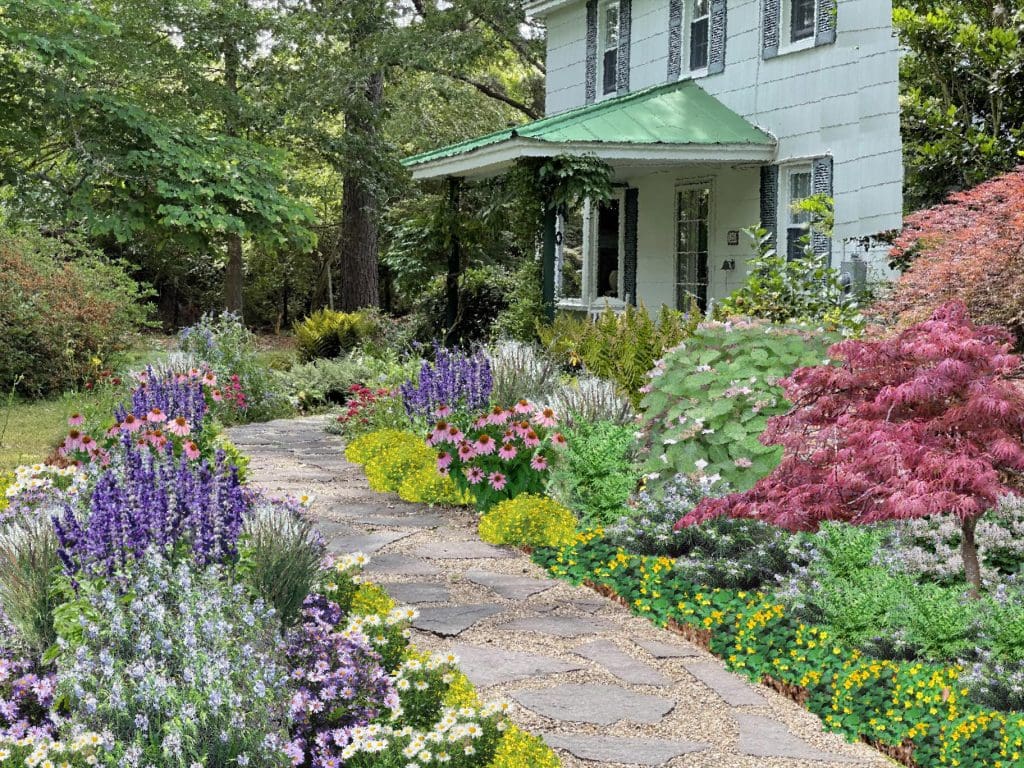A Biased View of Hilton Head Landscapes
Table of Contents7 Easy Facts About Hilton Head Landscapes DescribedThe Definitive Guide to Hilton Head LandscapesThe Buzz on Hilton Head LandscapesSome Known Questions About Hilton Head Landscapes.The Main Principles Of Hilton Head Landscapes An Unbiased View of Hilton Head LandscapesThe Facts About Hilton Head Landscapes Uncovered
Line creates all types and patterns and can be used in a selection of methods in the landscape. Line in the landscape is developed by the edge between 2 products, the overview or silhouette of a type, or a long linear feature. Lines are an effective tool for the designer because they can be used to create a boundless selection of shapes and forms, and they manage activity of the eye and the body.

Lines can have several attributes, such as those defined below, however they normally serve different functions. Figure 1. Lines in the landscape - hilton head landscapers. The residential or commercial properties of lines figure out how people reply to the landscape, both psychologically and literally. Straight lines are architectural and strong; they create an official personality, are normally related to an in proportion style, and lead the eye directly to a centerpiece.
Hilton Head Landscapes - Questions
Rounded lines produce a casual, all-natural, unwinded personality that is linked much more with nature and asymmetrical equilibrium. Bent lines move the eye at a slower pace and add enigma to the area by producing concealed sights.
Upright lines in the landscape consist of high, narrow plant material, such as trees, or tall frameworks, such as an arbor or a bird house on a post. Straight lines move the eye along the ground aircraft and can make a space really feel bigger. Low lines are more suppressed and create a sensation of remainder or repose.
Little Known Facts About Hilton Head Landscapes.
Low lines are produced by reduced yard walls, sidewalks, and short bushes. Lines are utilized to attract forms on a strategy. In strategy sight, they specify plant beds and hardscape areas. Lines are additionally created by the upright types of built features and plant product. There are three main line types that create form in the landscape: bedlines, hardscape lines, and plant lines.
Bedlines attach plant material to your home and hardscape since the eye complies with the line, moving the gaze through the landscape. Hardscape lines are created by the side of the hardscape, which marks the constructed structure. Line can likewise be created by long and narrow materials, such as a fencing or wall.
The Greatest Guide To Hilton Head Landscapes
Type is located in both hardscape and plants, and it is typically the leading visual component that spatially arranges the landscape and often determines the style of the garden. The type of structures, plant beds, and yard accessories likewise identifies the general kind theme of the yard. Official, geometric kinds consist of circles, squares, and polygons.
Plants produce form in the garden via their outlines or silhouettes, but kind can likewise be specified by a gap or adverse area in between plants - landscaping hilton head sc (https://www.openstreetmap.org/user/h1tnhdlndscps). Circles can be cycles, or they can be separated into fifty percent circles or circle sectors and combined with lines to develop arcs and tangents
The 4-Minute Rule for Hilton Head Landscapes
Circles can likewise be stretched into ovals and ellipses for more selection and passion. Circles are a solid style type since the eye is constantly drawn to the center, which can be used to highlight a centerpiece or attach other forms. Figure 2. Circular forms in hardscape and yard panels.
The square type can additionally be fractional and secondhand repeatedly to create a grid pattern. Unlike circles, squares are stronger on the try here brink, which can be lined up or overlapped to develop one-of-a-kind patterns and even more complicated forms. Polygons are many-sided forms with straight edges. Triangulars, for instance, are three-sided polygons.
Meandering lines frequently resemble the all-natural course of rivers or streams and can be referred to as smooth lines with deeply rounded wavinesses. Meandering lines (Number 3) function well for pathways, plant bedlines, and completely dry stream beds. Meandering lines can add interest and secret to a garden by leading audiences around corners to uncover brand-new views and rooms.
Some Known Incorrect Statements About Hilton Head Landscapes

Common plant forms are well developed and standard, as form is the most constant and well-known attribute of plants. Type can likewise be produced via the massing of plants, where the total mass creates a different form than a private plant.
A highly different type must be made use of with careone or more work well as a prime focus, but as well several wreak havoc. All-natural plant kinds, as opposed to over-trimmed kinds, ought to develop the bulk of the composition. The relevance of total type is more or much less depending on the viewing perspectivethe kind of a tree can show up fairly different to an individual standing under the cover versus seeing the tree from a distance in an open area.
Little Known Facts About Hilton Head Landscapes.
Plant forms likewise develop and define the space or open rooms in between the plants, producing either convex or scooped kinds in the voids. High-arching tree branches commonly produce a concave open area under the branches, and a round cover with reduced branches loads the space to produce a convex form outdoors area under the tree.
